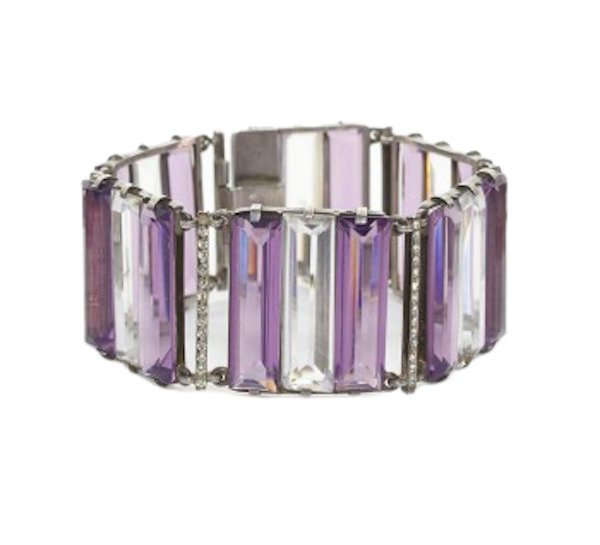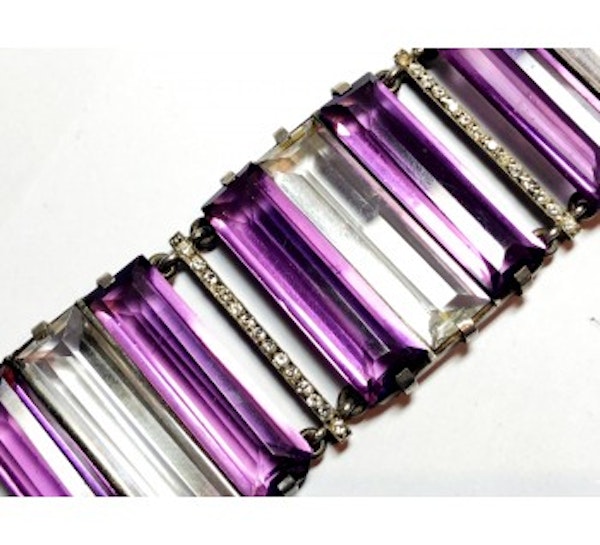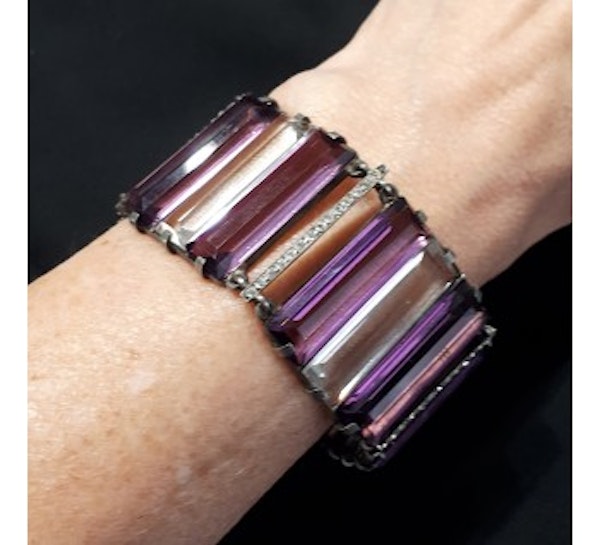French Art Deco Amethyst Rock Crystal and Silver Bracelet, Circa 1930
French Art Deco Amethyst Rock Crystal and Silver Bracelet, Circa 1930
£3,400.00
Description
A French Art Deco amethyst, rock crystal and eight-cut paste bracelet, with three stone groups of two large baguette-cut amethysts with rock crystal in the middle, with paste set spacers between, mounted in silver, with French boar marks for silver, with an R F, with a star and two dots maker's mark, for Féron, à CLAMART, with a Made in France stamp circa 1930.
Some of the earliest examples of amethyst jewellery are seen in works from Egypt. The ancient Greeks believed amethyst protected them from drunkenness and excess. The name derives from the Greek amethystos - "methustos" meaning intoxicated, with the prefix "a" meaning "not". It is thought the myth stems from the story of the titan Rhea giving Dionysus, the god of wine and madness, an amethyst to protect him. Amethyst is also known as the stone of St. Valentine, leading to the belief that it represented pure, chaste love. Until the 1700s Amethyst was seen as one of the cardinal gemstones, which were the most valuable gems and ranked in value amongst sapphire, ruby and emerald. It was especially popular during the Victorian period, with its rich purple colour and clarity being particularly effective in candlelight. Today its beautiful, vivid purple shades are highly sought after by gem collectors.
With thanks to Laura Preshong and First Class Watches.
The boar's head mark was used at the Paris Assay Office, it indicated a fineness of 800 or higher. The mark was in use from 1838 to 1961.
| item details | |
|---|---|
| Origin | French |
| Period | 1930s |
| Style | Art Deco |
| Condition | Good |
| Materials | Silver |
| Main Gemstone | Amethyst |
| Rock Crystal | |
| Main Gemstone Cut | Baguette Cut |
| Hallmark | French boar marks for silver |
| Dimensions | Length 216mm, width 33mm. 95.39 grams |
Product REF: 17714T






















